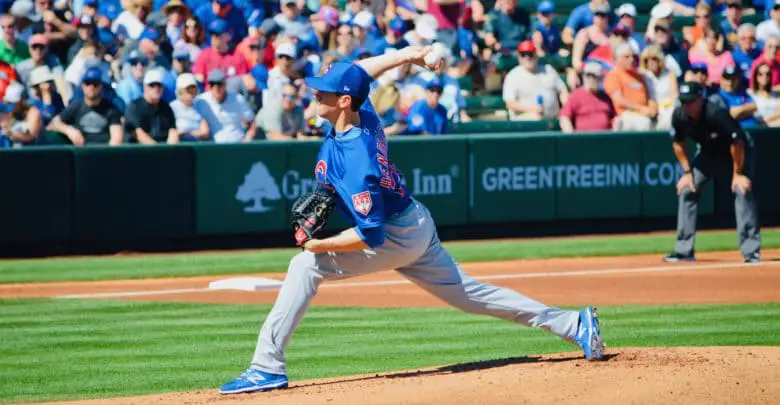
Kyle Hendricks Achieving Career-Best Results by Throwing More Elevated Fastballs
Kyle Hendricks is subtly putting together an outstanding season on the mound. A one-hit, two-run performance over 6.1 innings against the Athletics on Monday night brought his ERA to 3.06, the fifth consecutive outing in which he’d lowered that mark. That puts him solidly inside the top 10 in the National League, making the right-hander a dark horse candidate for the Cy Young.
While Hendricks has experienced ups and downs in 2019, his strikeout and walk rates are both better than his career averages and the league is batting just .229 against him. For much of his tenure in the majors, Hendricks has made a living getting batters out on the ground thanks in large part to his sinker, but we’re seeing a shift this season.
In the past, Hendricks would work up in the zone only on rare occasions, and even then it was for the sole purpose of changing the hitter’s eye level before throwing another changeup. But with the launch angle revolution sweeping baseball, changes have been necessary for everyone, Hendricks included.
Back in June, ESPN’s Jesse Rogers identified a trend that saw Hendricks throwing his four-seam fastball up in the strike zone more frequently rather than using the sinker as often. As Hendricks explained, working up in the zone allows him to avoid the uppercut swings so many hitters are utilizing.
We can see the difference very clearly in the heat maps below. The first displays all the four-seam fastballs Hendricks threw in 2018, the second shows where he’s thrown those same pitches this season.
Hendricks learned early in the season that, despite only sitting in the upper-80’s with his fastball, hitters could not catch up to the pitch if it was executed at the top of the zone. While hitters are seeing his other offerings relatively well compared to prior seasons, Hendricks is posting career-best numbers with his four-seam fastball, hence the thought process behind this drastic shift.
Following his outing on Monday night, opponents are averaging just .105 with a .263 slugging percentage on Hendricks’ four-seamer. A whiff rate approaching 30% and a solid 9.2% walk rate has limited the opposition to a .199 wOBA, which is why Hendricks is throwing the pitch more often. He has increased its usage to 19.9%, which, if it holds, would be second highest percentage of four-seam fastballs he has thrown in his career.
During the month of July, that rate ticked up to 25% as Hendricks leaned on the fastball to help him post a 2.25 ERA across 32 innings. Sticking with his elevated approach, he held hitters to a .045 batting average and an .091 slugging percentage while getting them to whiff over 30% of the time.
For the first time in his career, Hendricks is consistently working up in the strike zone with his fastball. That approach has shaved 164 points of opposing hitter’s batting average and more than 300 points off their slugging percentage. There used to be a time when Hendricks’ changeup was his best pitch. Now, with everyone trying to hit it high and watch it fly, the four-seam fastball has become the Professor’s best weapon.



